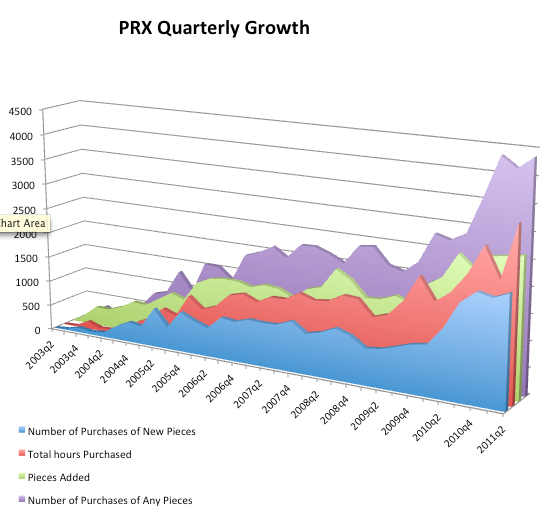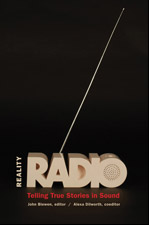800 Newpaper Front Pages
“Today’s Front Pages: Map View” is the Newseum’s new map-based browsing app — click open page one of 800+ worldwide newspapers:
“Today’s Front Pages: Map View” is the Newseum’s new map-based browsing app — click open page one of 800+ worldwide newspapers:
A big story changes fast at first, then evolves slowly over time. How do you let web-visitors follow that story? A single URL with all the info? A unique tag (or shortcode)?
How can one URL work both for those wanting to start from the beginning and for those just needing updates? Can one page contain everything from the initial tweets to the later analysis, historical perspective, and multimedia elements?
The answer to all above: Not easily. Mediabistro’s 10,000 Words outlines “The New, Convoluted Life Cycle Of A Newspaper Story.” The Seattle Times’ Lauren Rabaino summarizes what needs doing, presents some successful attempts, and offers her news-story info flow chart:
 Google/YouTube has its own Copyright Workshop with a well-linked lesson on the fine line between Fair Use and copyright infringement. Also check:
Google/YouTube has its own Copyright Workshop with a well-linked lesson on the fine line between Fair Use and copyright infringement. Also check:
Chilling Effects“aims to help you understand the protections that the First Amendment and intellectual property laws give to your online activities.” (A clearinghouse project of the Electronic Frontier Foundation and Harvard, Stanford, Berkeley, University of San Francisco, University of Maine, George Washington School of Law, and Santa Clara University School of Law clinics.)
The Stanford Fair Use Project “(the ‘FUP’) was founded in 2006 to provide legal support to a range of projects designed to clarify, and extend, the boundaries of ‘fair use’ in order to enhance creative freedom.
The Center for Social Media of American University “showcases and analyzes media for public knowledge and action.”
Now it’s time to steal some Disney — legally, of course. Professor Eric Faden, Bucknell University painstakingly pieced together this sampled summation, “A Fair(y) Use Tale:”
Remember, “Fair Use” is more a legal defense than a legal right; from Title 17 of the United States Code:
Section 107. Limitations on exclusive rights: Fair use
Notwithstanding the provisions of sections 106 and 106A [setting forth copyright owners’ exclusive rights and visual artists’ artistic rights], the fair use of a copyrighted work, including such use by reproduction in copies or phonorecords or by any other means specified by that section, for purposes such as criticism, comment, news reporting, teaching (including multiple copies for classroom use), scholarship, or research, is not an infringement of copyright. In determining whether the use made of a work in any particular case is a fair use the factors to be considered shall include ?
1. the purpose and character of the use, including whether such use is of a commercial nature or is for nonprofit educational purposes;
2. the nature of the copyrighted work;
3. the amount and substantiality of the portion used in relation to the copyrighted work as a whole; and
4. the effect of the use upon the potential market for or value of the copyrighted work.
The fact that a work is unpublished shall not itself bar a finding of fair use if such finding is made upon consideration of all the above factors.
 The campaign 170 Million Americans for Public Broadcasting has some good news and a gift of thanks:
The campaign 170 Million Americans for Public Broadcasting has some good news and a gift of thanks:
Thanks to you, the majority of federal funding for public broadcasting was preserved during the 2011 budget debate.
As a token of our gratitude, 170 Million Americans for Public Broadcasting and Anti-records are releasing RAISE YOUR VOICE! Sixteen free tracks from some of your favorite musicians – available only to advocates for public broadcasting for a limited time.
How can you download your free album?
Visit RYVoice.org and enter your contact information – then follow the downloading instructions on your screen. (Yes, we already have your contact info, but we still need you to enter your email address and zip to set up the download properly. We won’t send you any duplicate emails – promise!)
Invite your friends through Facebook and Twitter to join our campaign and download their free album as well! The 2012 budget debate in Washington will be a tough fight, and we need as many advocates to join us in support of public broadcasting.
RAISE YOUR VOICE! features artists who love public broadcasting and want to give back, including: Tom Waits, Wilco, Neko Case, Booker T. Jones, Man Man, Frank Turner, Mavis Staples, Jolie Holland, William Elliott Whitmore, Tinariwen, Lost in the Trees, Sean Rowe, Dr. Dog, Joe Henry, Marketa Irglova and Devotchka.
Thank you to Anti-records and these amazing recording artists for their contributions to the 170 Million Americans campaign!
Thank you, again, for being a part of our campaign to support a strong public media in America.

![]() Hearing Voices from NPR®
Hearing Voices from NPR®
119 Trouble: From Bad to Worse
Host: Barrett Golding of Hearing Voices
Airs week of: 2011-07-20
“Trouble” (52:00 mp3):
If you’re looking for trouble, you come to the right place:
Erica was a private investigator; now she’s a radio producer. The skills overlap: you ask questions, try to figure what happened, and make a report. (None of the interviewees were clients when she recorded them.) Produced by Larry Massett.
Recitations from the nightly news: a litany of tragedy, mayhem and murder. From Joe’s 2005 hour Bad Faith, and in his collections in the Joe Frank Shop, on the CD Joe Frank Team Favorites, Volume 2. Music: “A Mother (For Your Mind)” The Herbaliser, Blow Your Headphones.
A good neighbor goes bad in the producer’s DC block. Dozens of rats are infesting her yard and attacking other houses. Produced for This American Life, “Neighbors,” and part of Katie’s Neighborhood Stories series. End music: Music: “Cheval Noir” Fug, Ready For Us..
“I can break the law because… I am the law.” Sleepless in Tbilisi. A twenty-four hour tour, from Turkish baths to Batumi beaches, through the country of Georgia, in Southwest Asia. High-speed sight-seeing, driven by the accidental tourguide: “a ‘detective,’ or ‘special police,’ or ‘security force.’ It’s not clear. Sometimes he even says ‘KGB,’ though that no longer exists… does it?” Music: “Dachrilis Simgera (Song for Wounded)” Tbilisi Vocal Ensemble, Georgian Folk and Sacred Songs (2002). (Annotated transcript.)
If you build it, they will buy… ‘least when “it” is PRX. The org had a great “Q2 2011: Public Radio Exchange,” with wild-ass growth in pieces and purchases, meaning more stories for stations and semolians for producers:
Q2 2011 is our biggest yet, lead by a record number of pieces purchased by stations, 4,363 (35% growth over Q2 2010). Over the coming weeks we’ll be sending out over $70,000 in royalty checks to producers and stations across the country for this quarter’s activity.

As part of a ProPublica investigation into the deep, dark toxic chemicals we penetrate Mother Earth with to make her cough up “natural” gas, here’s “Fracking: The Music Video– My Water’s On Fire Tonight:”
The video is by David Holmes and other J-students at NYU’s Studio 20 . Sez they: “The best explainers are direct, concise and easy to understand. But investigative journalism is rarely any of those things, instead reflecting the messiness of real life.”
 Public radio’s annual April 1 attempts at humor are often as funny as a Farm Report. But there were a couple exceptions in this year’s crop.
Public radio’s annual April 1 attempts at humor are often as funny as a Farm Report. But there were a couple exceptions in this year’s crop.
Here & Now nailed me, and their host, in “Social Media Experiment: Twitter Takes Over Radio Airwaves” (5:24 mp3):
“Most of the midday NPR programming is geared towards people in their sixties and seventies,†said Smith. “We want to expand our audience to a younger demographic.â€
And NPR Morning Edition was quick and clever with “Advances In 3-D May Mean No Ridiculous Glasses” (1:42 mp3):
Mr. ANDERSON SMITH (YHR Analysts): Well, I think it’s pretty well established that 3D is the future.
SANDS-WINDSOR: That’s Anderson Smith, entertainment expert with YHR Analysts.
Mr. SMITH: There are going to be 3D televisions, 3D billboards, 3D computers. The only thing standing in the way now is those ridiculous glasses.
SANDS-WINDSOR: San Diego ophthalmologist Dr. Sebastian Marsh says he has a solution.
Dr. SEBASTIAN MARSH (Ophthalmologist): We’ve developed the first surgical procedure that lets people’s eyes act like 3D glasses.
SANDS-WINDSOR: The operation is still considered experimental. One of the first patients, Rebecca Stern, says she’s happy with the results so far.
Ms. REBECCA STERN: Seeing “Gnomeo & Juliet” without those horrible glasses was life changing. There are no words to describe it.
SANDS-WINDSOR: There are still some kinks to work out.
Dr. MARSH: Some patients have complained of blurred vision when they are not looking at 3D screens. So we’re actually working now on some special corrective lenses that will allow our patients to see real life normally.
BBC asks GHP to mash/mess/mix their theme: “Music sampling and remixing in the bedroom.”
Mark Vidler = Go Home Productions
More info, and audio of the GPH-remixed BBC News theme: “BBC News – New utility that breaks music down into its components.”
From Funny or Die, “Sarah Palin Media Addict”(starring Gina Gershon):
More FOD Gina Does Sarah:
Gina Gershon Strips Down Sarah Palin
NYTimes Lens blog has a great post on what to bring and “What Not to Bring to Tahrir Square: Stephen Farrell Learns to Pack a Smaller Camera Kit.”
CAIRO — It is rare that the most important piece of equipment in your bag is the bag itself, even more rare for that bag to be a black plastic trash sack slung over your shoulder as you walk past pro-government thugs on a bridge over the River Nile. The trash bag’s purpose, of course, is to conceal your large nylon camera bag, which is likely to get you grabbed off the street by the aforementioned thugs.
Sometimes the hardest part of a story is getting there. Sometimes it is getting around. Sometimes it is obstructive intelligence agencies and soldiers. Sometimes it is lawlessness, sometimes overattentive law enforcement. Sometimes it is lack of transport, poor communications, power blackouts, accreditation difficulties or a hostile local population.
Though my colleagues and I have worked in far more dangerous places and under far more primitive conditions, I don’t think I’ve ever before covered a story in which all the above-mentioned obstacles were present and taking turns on a daily — sometimes hourly — basis to become the principal barrier to getting the journalist in and the story out.
 CPB’s Ted Coltman sent some pubcasting audience/contributer figures to the Pubradio maillist. It’s the first time I saw this data so concisely assembled. So, with his permission:
CPB’s Ted Coltman sent some pubcasting audience/contributer figures to the Pubradio maillist. It’s the first time I saw this data so concisely assembled. So, with his permission:
In FY 2009, TV and radio station grantees reported to CPB (on their Annual Financial Reports) a total of 5.6 million individual contributors (either to stations or to their associated “Friends” groups). There is undoubtedly some double-counting of individuals in that number (because some individuals give to more than one station), but CPB has no way of “de-duping” these data.
In validating a rule-of-thumb such as “only about one listener in 10 is a member/contributor,” it makes a big difference whom you count as a “listener” — anyone, for example, who listens at least once a month?… or only someone who listens at least once a week?
Public radio’s weekly cume audience is about 30.6 million persons, so the roughly 2.5 million contributors reported by public radio stations would be about 8 percent of the weekly cume listeners (roughly 1 in 12). Its monthly cume audience is estimated at about 64.7 million persons, so the reported contributors would represent about 4 percent of the monthly cume listeners (about 1 in 25).
Similarly, public television’s weekly cume audience is about 60.4 million persons, so the roughly 3.2 million contributors reported by public TV stations would be about 5 percent of the weekly cume viewers (1 in 20). And public TV’s monthly cume audience is about 121.9 million persons, so the reported contributors would constitute about 2.6 percent of the monthly cume audience (1 in 40).
Of course, the “unit of giving” is often a family or household, and the “units of listening or viewing” I just cited are individual persons (aged 12+ in the case of radio, or 2+ in the case of TV), so these ratios shouldn’t be considered very precise or reliable… but then neither are most “rules of thumb.”
Data sources: CPB’s ISIS database, RRC, Arbitron, PBS Research, Nielsen.
See 170 Million Americans for Public Broadcasting: The Numbers.
 Please pile on and join in the free4all-clusterfuq of commenting my “Killing Content” conspiratorial raving has incited over at the Transom: Sidebar.
Please pile on and join in the free4all-clusterfuq of commenting my “Killing Content” conspiratorial raving has incited over at the Transom: Sidebar.
Some mining melodies to watch the Chilean miner’s rescue by (PBS NewsHour coverage; ABC News live feed; and if your eyes ain’t wet yet, try this NYTimes.com slideshow)…
 From Carlin’s 7 words to Stern’s shock Jock to Jackson’s right breast, Newsweek put together this entertaining timeline of FCCProfanity on TV: The FCCs Evolving Rules.”
From Carlin’s 7 words to Stern’s shock Jock to Jackson’s right breast, Newsweek put together this entertaining timeline of FCCProfanity on TV: The FCCs Evolving Rules.”
via Amy Mayer.
 Here’s the Fresh Air ep that got the series cancelled in Mississippi, featuring the phenomenal “Comedian Louis C.K.: Finding Laughs Post-Divorce” (37:23 mp3):
Here’s the Fresh Air ep that got the series cancelled in Mississippi, featuring the phenomenal “Comedian Louis C.K.: Finding Laughs Post-Divorce” (37:23 mp3):
A MS Pubcasting exec explained why they pulled TerryG off their air: “Too often Fresh Air’s interviews include gratuitous discussions on issues of an explicit sexual nature.” Damn, I’m gonna have to start listening more often.
Louis C.K.: site | tube | “Louie” FX TV series | Time Q&A
NYTimes offers A Tax Form for the Marginally Employed. Freelancers: that’s you:
By graphic designer Sam Potts.
 HV is heavily involved in a new collaborative project/domain, the PubMedia Commons at PubMedia.us.
HV is heavily involved in a new collaborative project/domain, the PubMedia Commons at PubMedia.us.
It’s an aggregation of different blogs about public media. You can read excerpts & link-to them all their posts from one webpage., and one feed:
feeds.feedburner.com/PubmediaPlanet
(An aggregation of blogs is known as a “planet“). We also have weekly features of audio, video, and multi-media work. And there’s a place for pubmedia web folk to share code & hacks (a lot re: WordPress). Future plans include merging w/ PublicMediaCamp & PubMediaChat.
Another anatomy of a news story, this from the Onion:
“Breaking News: Some Bullshit Happening Somewhere”
via Gravity Medium.
 The publshers of Reality Radio have allowed to post a bit of their book. From John Biewen’s Introduction:
The publshers of Reality Radio have allowed to post a bit of their book. From John Biewen’s Introduction:
The goal is to bring together producers with distinctive, powerful, and richly varied approaches to their craft. Some of our essayists call themselves audio artists. They push the boundaries of journalism to the breaking point—okay, beyond the breaking point—in the service of an aesthetic vision but also in pursuit of a different (higher?) sort of truth. Others describe themselves primarily as storytellers, drawing mainly on the narrative power of the spoken word. Still others see themselves as journalists; on the surface, at least, they emphasize information over formal innovation. But the journalistic documentarians, too, give careful attention to form and, in fact, employ plenty of (conventionally sanctioned) artifice along the way.
Here’s an excerpt of the essay “Coming Home,†by Katie Davis:
A boy rumbles by on his skateboard, says his name is Julio and asks to pet the dogs. Sure. Another twelve-year-old bellows like a carnival hawker, “Hey lady, you got a tire patch?†Sure. And I give Joaquin ten dollars to run to the bike store to buy three patch kits, one for him, and the rest I’ll keep for other kids. The super from the building down the street notices the cluster of kids and lugs up two old bikes he found in the alley. And this is how, without planning, I start a recycle-a-bicycle program on my front porch. Everything takes place on my front porch for a long while.
I become known as the “bike lady,†the lady who always has granola bars and time to sit and listen. After a year, I form a youth group called the Urban Rangers and begin raising money to pay for bike parts and snacks. Two teenagers ask me start a basketball team. Sure why not? And then as I explain my philosophy to the guys, that winning is not important on this team, and everybody will get to play in every game. “No, no,†the boys interrupt and begin coaching me on how to be a coach. The dialogue is funny and that night the rusty part of my radio brain begins chanting, Good tape. Good tape.
So, I call an old friend at NPR and float the idea of writing an “essay with tape†about my team. I warn the show producer that the story will be personal, like a diary, that I break the rules of journalism in every paragraph. I write in the first person and I have not kept any objective distance from these boys. I give money to two brothers because I know they are hungry. I hire another kid’s father because they are struggling on $12,000 a year. The boys hang out at my house, they come to tell me about problems. I no longer wanted any distance between me and these neighborhood kids. NPR solves the issue of my status by calling me a commentator. My transition from reporter to commentator took four years of neighborhood porch sitting and trouble shooting and is distilled into this one word.
From Reality Radio: Telling True Stories in Sound, edited by John Biewen.
© 2010 by the Center for Documentary Studies.
Used by permission of the University of North Carolina Press.
Ka